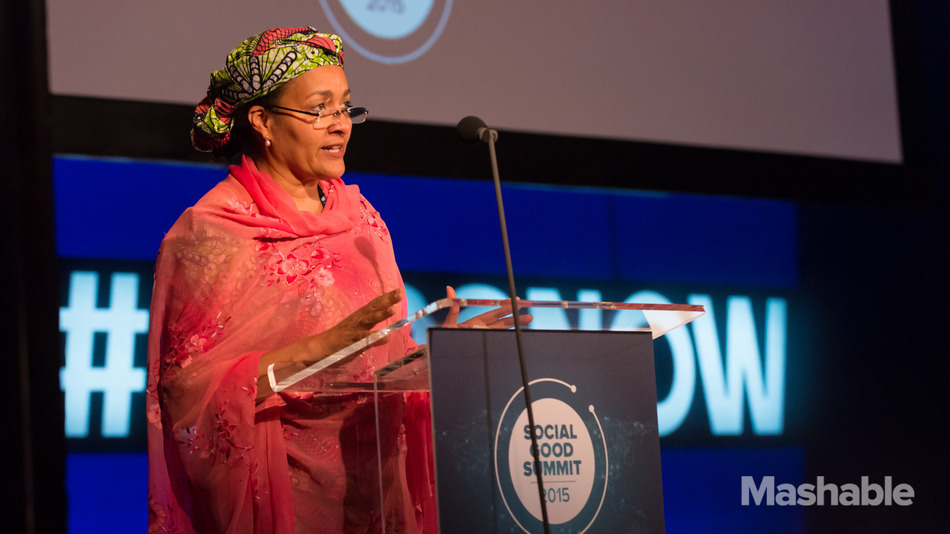
Amina J. Mohammed, the U.N. Secretary-General’s Special Adviser on Post-2015 Development Planning, speaks at the Social Good Summit on Sept. 27, 2015.
Two days after the United Nations formally adopted a set of ambitious goals to tackle the world’s most pressing problems by the year 2030, Amina J. Mohammed’s main concern is getting the word out about them to as many people as possible.
As the U.N. Secretary-General’s Special Adviser on Post-2015 Development Planning, Mohammed has spent the past three-and-a-half years corralling the 193 member states to agree on the 17 Sustainable Development Goals (SDGs), often referred to simply as the Global Goals — a blueprint for the world to end extreme poverty, fight inequality and injustice, and combat climate change within the next 15 years.
Mohammed is one of the people at the forefront of a clever and widespread campaign to make the SDGs famous, especially among youth, including colourful designs and celebrity endorsements — all creative touches the MDGs sorely missed 15 years ago. And though it’s early yet, it seems to be working.
The SDGs were ratified last Friday to replace the last set of goals, the eight Millennium Development Goals (MDGs), which were adopted in 2000 and expire at the end of this year. While the MDGs saw progress — the global number of people living in extreme poverty has declined by more than half since 1990, for example — various goals, such as reducing the child mortality rate by two-thirds, were not met. The MDGs were also primarily directed at developing countries.
Focusing on issues such as quality universal education, reduced inequalities, improved water and sanitation, sustainability and more, there are 163 specific targets across all 17 goals for tangible actions in developed and developing countries alike.
The 2030 agenda is also much more inclusive, mentioning certain identities such as people with disabilities for the first time — likely due in part to the extensive consultation program that asked average citizens what they wanted to see addressed.
Negotiations weren’t easy. According to The New York Times, certain U.N. member states, including Qatar and the Vatican, argued against including universal access to sexual and reproductive health services as part of Goal 5 (gender equality).
There’s also a hefty price tag; it will cost an estimated $3 trillion to achieve the 17 goals by 2030.
But now that the SDGs have been ratified, there’s one key piece of the puzzle left: how to hold governments accountable.
Read the full article here.




